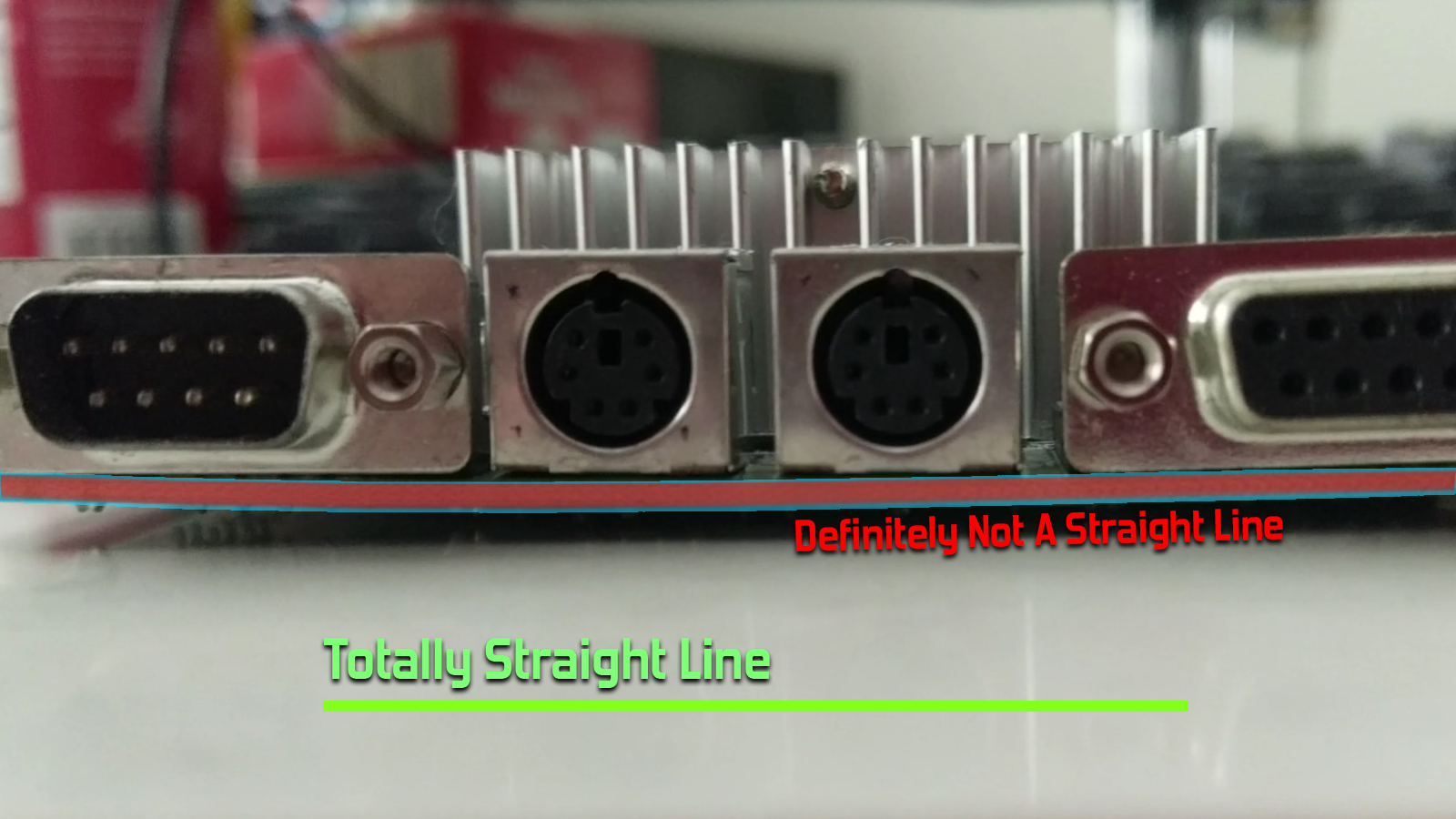This part was obtained on March 8th, 2017, for $40.
The motherboard for this computer is the Freetech P5F72 ATX board. The P5F72 uses an Intel 82430VX chipset, is one of the earliest motherboards capable of Plug 'n Play, and contains an equal number of PCI and ISA slots, giving me ample wiggle-room to figure out what expansion cards I needed.

My chief reasoning for selecting this board was the form factor. While a PC/AT board would be more akin to 'the true experience' in terms of what would have been common back in the day, the AT is immensely difficult to find cases for at auction (online especially), particularly when pricing is an issue. Apart from that, one of the key tenets of this project is to create a reverse-sleeper: instead of putting a modern gaming rig in an antiquated case, it's an antiquated gaming rig in a modern case. You won't find AT cases with all the bells and whistles like today's cases--they just don't exist.
Compounded by issues with finding a working, reliable AT power supply with the build quality that would have existed in the early 90's, the best decision was certainly to spring for an ATX board. Knowing that there were ATX boards with sockets compatible with the later Pentium processors, this was the best route to take for cost-efficacy. But the advantages don't stop there.
Additionally, you can't find PCI slots on any PC/AT motherboards: the PCI standard didn't exist then, meaning the Voodoo2 is out. No Quake for you.
ATX it is. Unless you don't care about 3D, and you have deeper pockets, in which case: Okaaaaaaay. But don't say I didn't warn you.
With this in mind, the P5F72 also sports the following features:
- Integraded LPT, COM1, and COM2 ports
- Built-in controller for IDE fixed disks, ATAPI CD-ROM, and floppy drives
- Plug 'n Play compatibility so you don't have to dance with IRQ jumpers for hours and hours
- 512KB L2 Cache, from a time when L2 cache was something you inserted into an IC socket on the board
- Able to supply the strange voltages required by the MMX-capable Pentiums, unlike some Socket 7 boards
- Automatic disk size detection, so you don't have to configure the number of cylinders/sectors on the disk.
For someone such as myself who grew up in the era where these things were an expected standard, and such things would be unthinkable to not include on a modern motherboard, the P5F72 is an absolute godsend.
This particular specimen was not without its problems, however.
Circuit boards are made of fiberglass, coated in copper on both sides (sometimes with layers of copper/fiberglass sandwiched together) and often covered in a silkscreen or epoxy afterwards to keep it clean. This is a durable, reliable, and time-tested setup; but if you introduce its natural predators of heat and stress, fiberglass will bend over faster than a cougar looking for college-aged men on St. Patrick's Day in Savannah.
I think this motherboard might have had a bit of fun a decade ago.

Oh boy. That's not good.
The eBay listing did say that there was "a bit of warping near the parallel port," and upon later review, I did see that the seller noted this bend in extensive photos that I had missed due to the photos being obscured by the 'next' button on the eBay interface. Okay, that's fine. The board is marked as tested and working, so I can get a refund if they lied about that at least.
Still, it was a cause for concern. I cautiously mounted the thing on top of a ceramic bowl to keep it off the granite of my counter-workspace just in case any stray residue I missed in my cleanup were conductive enough to short something in a weird place because of the warping.
ATX boards are typically capable of about a half-inch (roughly 1.3cm) of stress at max before something breaks, in my experience. I optimistically stuck with this board because the additional features and ease of use were too nice to ignore over what might just be a cosmetic lapse.
Ultimately, the warping ended up being a non-issue. The board booted, and with a bit of jumper tweaking (definitely too frustrating for photos, for someone who's never built a computer that needed jumpers to set the voltage and clock speed of the CPU), everything was dandy.
 Will Preston
Will Preston
Discussions
Become a Hackaday.io Member
Create an account to leave a comment. Already have an account? Log In.